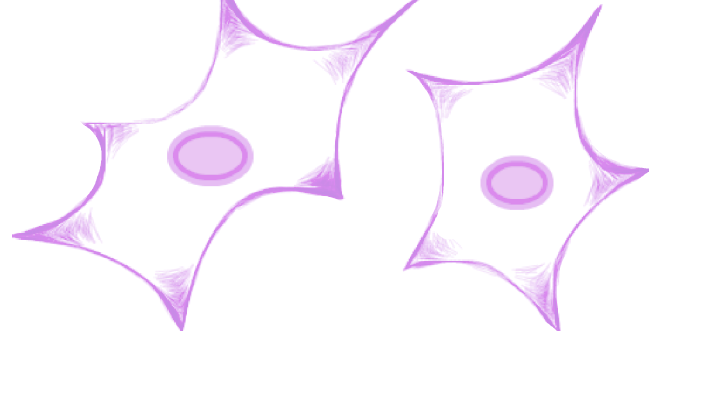Cell Senescence Entries for MAPK1
- Cell Types
- Lung fibroblast
- Cell Lines
- IMR-90
- Cancer Cell?
- No
- Method
- Knockdown
- Type of senescence
- Oncogene-induced
- Senescence Effect
- Induces
- Primary Reference
- Deschênes-Simard et al. (2013) Tumor suppressor activity of the ERK/MAPK pathway by promoting selective protein degradation. Genes Dev 27(8)900-15 (PubMed)
MAPK1 Gene Information
- HGNC symbol
- MAPK1
- Aliases
- ERK; ERK2; MAPK2; p41mapk; PRKM1; PRKM2
- Common name
- mitogen-activated protein kinase 1
- Entrez Id
- 5594
- Description
- This gene encodes a member of the MAP kinase family. MAP kinases, also known as extracellular signal-regulated kinases (ERKs), act as an integration point for multiple biochemical signals, and are involved in a wide variety of cellular processes such as proliferation, differentiation, transcription regulation and development. The activation of this kinase requires its phosphorylation by upstream kinases. Upon activation, this kinase translocates to the nucleus of the stimulated cells, where it phosphorylates nuclear targets. One study also suggests that this protein acts as a transcriptional repressor independent of its kinase activity. The encoded protein has been identified as a moonlighting protein based on its ability to perform mechanistically distinct functions. Two alternatively spliced transcript variants encoding the same protein, but differing in the UTRs, have been reported for this gene. [provided by RefSeq, Jan 2014].
MAPK1 Ontologies
- Gene Ontology
-
Process: GO:6468; protein phosphorylation
GO:7049; cell cycle
GO:16310; phosphorylation
GO:6915; apoptotic process
GO:165; MAPK cascade
GO:7166; cell surface receptor signaling pathway
GO:35556; intracellular signal transduction
GO:10800; positive regulation of peptidyl-threonine phosphorylation
GO:32270; positive regulation of cellular protein metabolic process
GO:32872; regulation of stress-activated MAPK cascade
GO:51493; regulation of cytoskeleton organization
GO:72584; caveolin-mediated endocytosis
GO:90170; regulation of Golgi inheritance
GO:2000641; regulation of early endosome to late endosome transport
GO:31647; regulation of protein stability
GO:6935; chemotaxis
GO:7165; signal transduction
GO:70371; ERK1 and ERK2 cascade
GO:7268; chemical synaptic transmission
GO:10628; positive regulation of gene expression
GO:32212; positive regulation of telomere maintenance via telomerase
GO:51973; positive regulation of telomerase activity
GO:1904355; positive regulation of telomere capping
GO:18107; peptidyl-threonine phosphorylation
GO:34614; cellular response to reactive oxygen species
GO:71276; cellular response to cadmium ion
GO:18105; peptidyl-serine phosphorylation
GO:7611; learning or memory
GO:10759; positive regulation of macrophage chemotaxis
GO:120041; positive regulation of macrophage proliferation
GO:1903351; cellular response to dopamine
GO:70849; response to epidermal growth factor
GO:34198; cellular response to amino acid starvation
GO:51403; stress-activated MAPK cascade
GO:6974; cellular response to DNA damage stimulus
GO:7507; heart development
GO:9887; animal organ morphogenesis
GO:14032; neural crest cell development
GO:19858; cytosine metabolic process
GO:30278; regulation of ossification
GO:30641; regulation of cellular pH
GO:30878; thyroid gland development
GO:31663; lipopolysaccharide-mediated signaling pathway
GO:32496; response to lipopolysaccharide
GO:33598; mammary gland epithelial cell proliferation
GO:35094; response to nicotine
GO:38127; ERBB signaling pathway
GO:42473; outer ear morphogenesis
GO:43330; response to exogenous dsRNA
GO:45596; negative regulation of cell differentiation
GO:48538; thymus development
GO:50852; T cell receptor signaling pathway
GO:50853; B cell receptor signaling pathway
GO:60020; Bergmann glial cell differentiation
GO:60291; long-term synaptic potentiation
GO:60324; face development
GO:60425; lung morphogenesis
GO:60440; trachea formation
GO:60716; labyrinthine layer blood vessel development
GO:61308; cardiac neural crest cell development involved in heart development
GO:71356; cellular response to tumor necrosis factor
GO:97011; cellular response to granulocyte macrophage colony-stimulating factor stimulus
Cellular component: GO:5634; nucleus
GO:5737; cytoplasm
GO:16020; membrane
GO:5794; Golgi apparatus
GO:5886; plasma membrane
GO:5770; late endosome
GO:5739; mitochondrion
GO:5901; caveola
GO:5856; cytoskeleton
GO:5925; focal adhesion
GO:5829; cytosol
GO:30054; cell junction
GO:45202; synapse
GO:5769; early endosome
GO:5815; microtubule organizing center
GO:5819; spindle
GO:5576; extracellular region
GO:5654; nucleoplasm
GO:72686; mitotic spindle
GO:1904813; ficolin-1-rich granule lumen
GO:5788; endoplasmic reticulum lumen
GO:35578; azurophil granule lumen
GO:31143; pseudopodium
Hide GO termsFunction: GO:166; nucleotide binding
GO:4672; protein kinase activity
GO:4674; protein serine/threonine kinase activity
GO:4712; protein serine/threonine/tyrosine kinase activity
GO:5524; ATP binding
GO:16301; kinase activity
GO:16740; transferase activity
GO:106310; protein serine kinase activity
GO:4707; MAP kinase activity
GO:3677; DNA binding
GO:5515; protein binding
GO:42802; identical protein binding
GO:8353; RNA polymerase II CTD heptapeptide repeat kinase activity
GO:19902; phosphatase binding
GO:1784; phosphotyrosine residue binding
GO:4708; MAP kinase kinase activity
Homologs of MAPK1 in Model Organisms
In other databases
- LongevityMap
- This gene is present as MAPK1
External links
- OMIM
- 176948
- Ensembl
- ENSG00000100030
- Entrez Gene
- 5594
- UniGene
- 431850
- 1000 Genomes
- 1000 Genomes
- HPRD
- GenAtlas
- MAPK1
- GeneCards
- MAPK1
